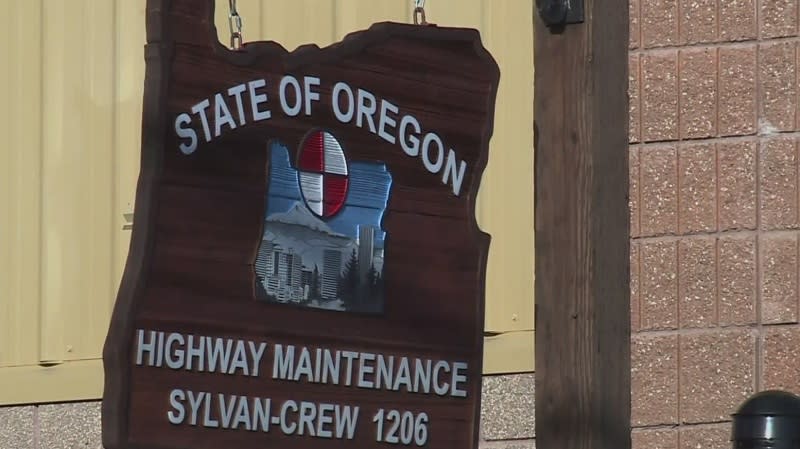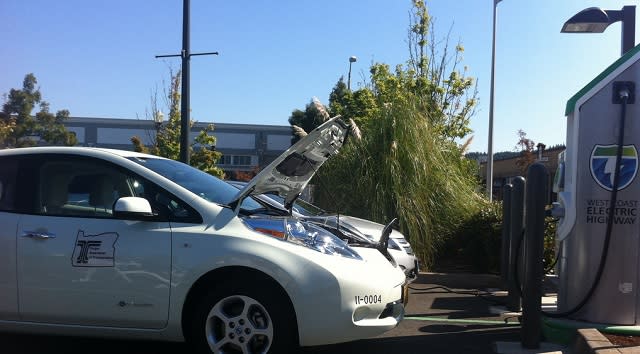105 years of the gas tax: ‘Getting Oregon out of mud’
PORTLAND, Ore. (KOIN) — Over time, Oregon has been first-in-the-nation for a number of things. On February 25, 1919, Oregon became the first state in the nation to pass a per-gallon gasoline tax.
The tax of 1-penny-per-gallon raised $342,000 the first year. Oregon lawmakers were looking for ways to pay for road construction and maintenance, and this worked. Even now, 105 years later, the gas tax is one of the primary ways Oregon funds the upkeep and building of new roads and highways.
Other states noticed Oregon’s success. About 10 years later, every other state — and the federal government — had a gas tax in place. It remains the primary source of money for today’s transportation network.
That penny-per-gallon tax in 1919 would be about 18 cents in today’s money. Gas back then sold for about 25-cents-per-gallon, which is about $4.46 currently.
Commissioner Mingus Mapps on the current state of PBOT, campaign for mayor
Don Hamilton with the Oregon Department of Transportation told KOIN 6 News what the topic of the day was when the gas tax was implemented in 1919.
“It’s also interesting to note that 1-cent-per-gallon went into effect is we were talking about getting Oregon out of the mud,” Hamilton said. “That’s one of the things that the Oregon Highway Department, as it was known in those days, was trying to get Oregon out of the mud, trying to build more effective roads.”
The gas tax took incremental jumps over the years and took 66 years — until 1985 — to reach 10-cents-per-gallon. It took another 39 years — until 2024 began — for the gas tax to rise to its current rate of 40-cents-per-gallon.
“The money under the state constitution actually has to go to highway projects. That’s a determination that was made by voters a few years back,” he said. “That’s a big arena to talk about highway projects. But it has to go to road improvement and it can be a lot of different things. It can be maintenance, it can be improvements.”
Oregon officials concerned by ClackCo’s stance on social service center
Now, you may say the gas tax is the reason gas prices are so high — but that’s not really right. AAA said the average price of a gallon of gas in Multnomah County is $3.95 — which includes the 40-cent gas tax. That means in today’s world, a gallon of gas is cheaper than it was in 1919.
“Nobody likes to pay taxes. Especially as we see gas prices increase, which they do from time to time, people always get worried about it,” Hamilton noted. “It is something that voters actually have a say in that, too, through their legislators and the initiative and referendum process. So when the price of gas goes up, there is oftentimes a discussion about how can we reduce the price of gasoline. The gas tax is actually one way we have a handle on that, too. We haven’t seen any initiative or referendum effort go toward voters, though.”

Hamilton also said there are discussions about different ways to fund ODOT, but nothing imminent.
“Right now, legislators are discussing different ways to change the way ODOT funding is administered,” he added. “And that’s going to come up at some point in the 2025 legislative session. They’ve just had some very early preliminary conversations about what that’s going to look like. Now, whether that’s going to involve a change in the gas tax is an issue that really hasn’t come up, but that’s a possibility. But no decisions have been made on that. But that’s something for lawmakers during the 2025 session they may address.”
Dixieland, oatmeal at Bob’s Red Mill to celebrate Bob Moore’s life
The advent of electric vehicles is another issue ODOT is watching closely.

“One of the reasons things have changed so much, not only are cars becoming more efficient and using less gasoline – which is very good, good for the air, good for climate change issues – but it’s also changing for the electric vehicles, too. With the increase in electric vehicles, obviously they don’t use any gasoline at all. We see a steady decline projected for the rest of the ’20s for the gas tax revenues coming up. It’s pretty steady right about now here in the mid ’20s, but we’re projecting a steady decline in gas tax revenues coming up for the rest of the ’20s,” Hamilton said. “We’re really concerned about what that’s going to mean for the revenues coming up that ODOT’s going to have available for maintenance, for funding, for all the things we use the gas tax revenue for.”
So the next time you pull into a gas station — to either pump your own or have an attendant handle it — just remember Oregon led the way in using gas taxes to pay for the roads you drive on.
For the latest news, weather, sports, and streaming video, head to KOIN.com.

